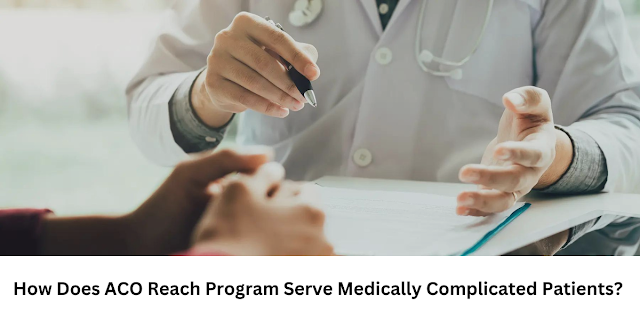How Does ACO Reach Program Serve Medically Complicated Patients?
The healthcare industry
is constantly evolving to better serve patients, improve quality of care, and
reduce healthcare costs. In this landscape, medically complex patients are a
crucial focus due to the high costs associated with their treatment and extended
recovery periods. To address the unique needs of these patients, a new model of
care delivery has emerged - the ACO Reach Program.
The concept of value-based models in healthcare delivery gained momentum with the establishment of the CMS Innovation Center in 2010. These models aimed to provide quality care while simultaneously reducing healthcare costs. However, the COVID-19 pandemic exposed various challenges, including health disparities among underserved communities, prompting the need for further innovation.
The Newest Model – ACO Reach Program
In October 2021, the CMS Innovation Center introduced a groundbreaking approach to healthcare delivery. This new model, known as ACO Realizing Equity, Access, and Community Health (REACH), aims to address the shortcomings of previous models and align with the priorities of the Biden-Harris Administration. Its primary focus is on improving health equity among underserved populations.
ACO Reach Program’s Focus on Health Equity
ACO REACH stands out by its dedication to achieving health equity, particularly for medically complex patients. This model recognizes that these patients face unique clinical challenges and require a different approach to care. Further, it adopts a two-fold strategy to ensure improved care delivery:
The "High Needs Population ACO" Track
This track is tailored to meet the specific needs of medically complex beneficiaries. It encompasses patients with significant chronic illnesses or other serious health conditions. By doing so, the ACO Program ensures that patients with complex medical conditions receive the specialized care they require.
Focus on Underserved Populations
The program extends its scope to include underserved populations, such as those residing in rural areas or persistent poverty-stricken regions. These areas often have a higher concentration of patients with chronic illnesses and multiple medical comorbidities.
Percentage of Population
Groups with 2+ Chronic Comorbidities:
- 35%
of patients in rural areas vs. 26% in urban neighborhoods.
- 77% of patients aged 65+ who are dual-eligible vs. 63% with private insurance or MA, or 59% with Medicare only.
In its quest to enhance healthcare quality, efficiency, and equity, the ACO Program ensures that patients with chronic and critical conditions have access to the most appropriate and efficient sites of care tailored to their complex needs.
Program’s Approach to Addressing Challenges
Medically complex patients come with their set of challenges, such as high healthcare costs, intensive treatments, and extended recovery periods. ACO Reach Program employs a multi-faceted approach to address the challenges faced by medically complex patients. This includes care coordination, telehealth services, and a patient-centric model, ensuring that patients receive the right care at the right time.
Learn more about this
and other such advanced healthcare programs at Persivia!


.png)
Comments
Post a Comment
Please do not enter any spam link in the comment box